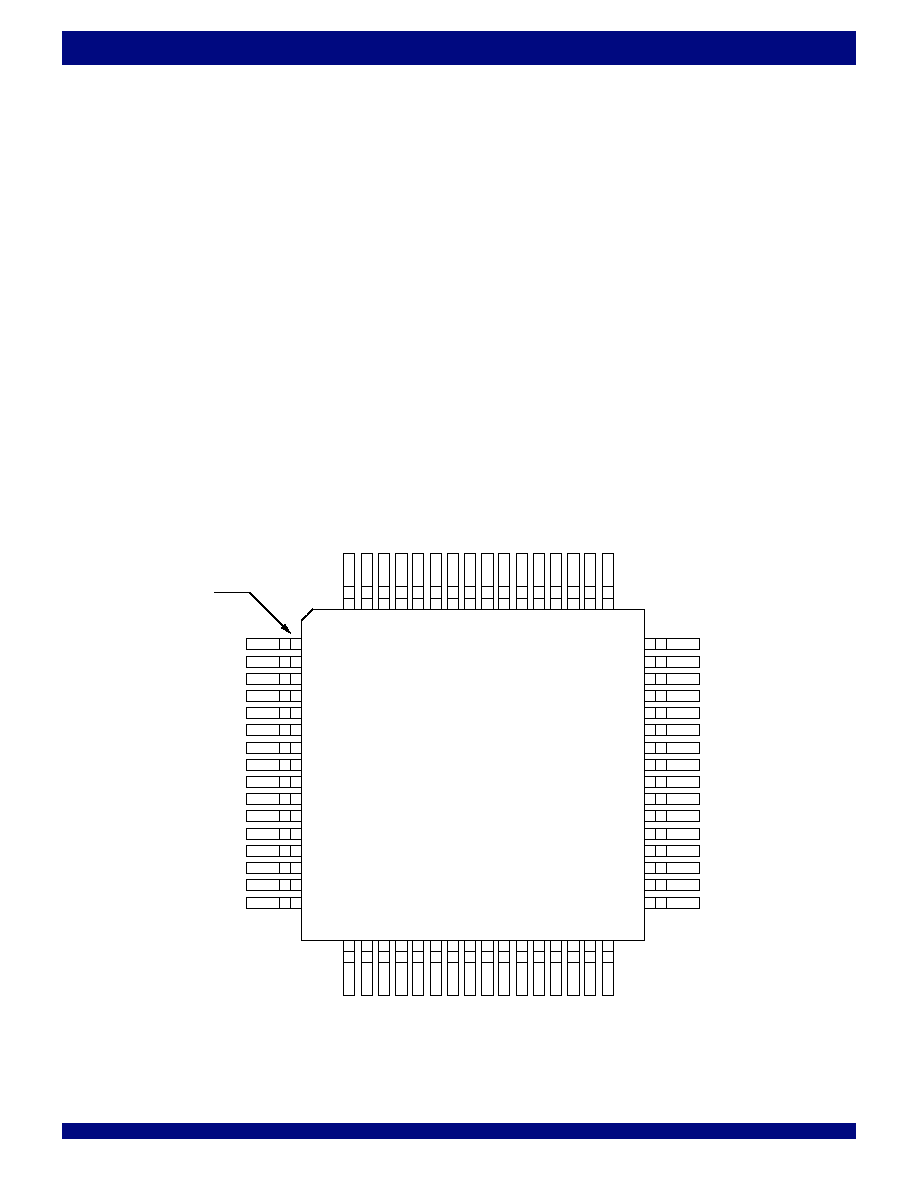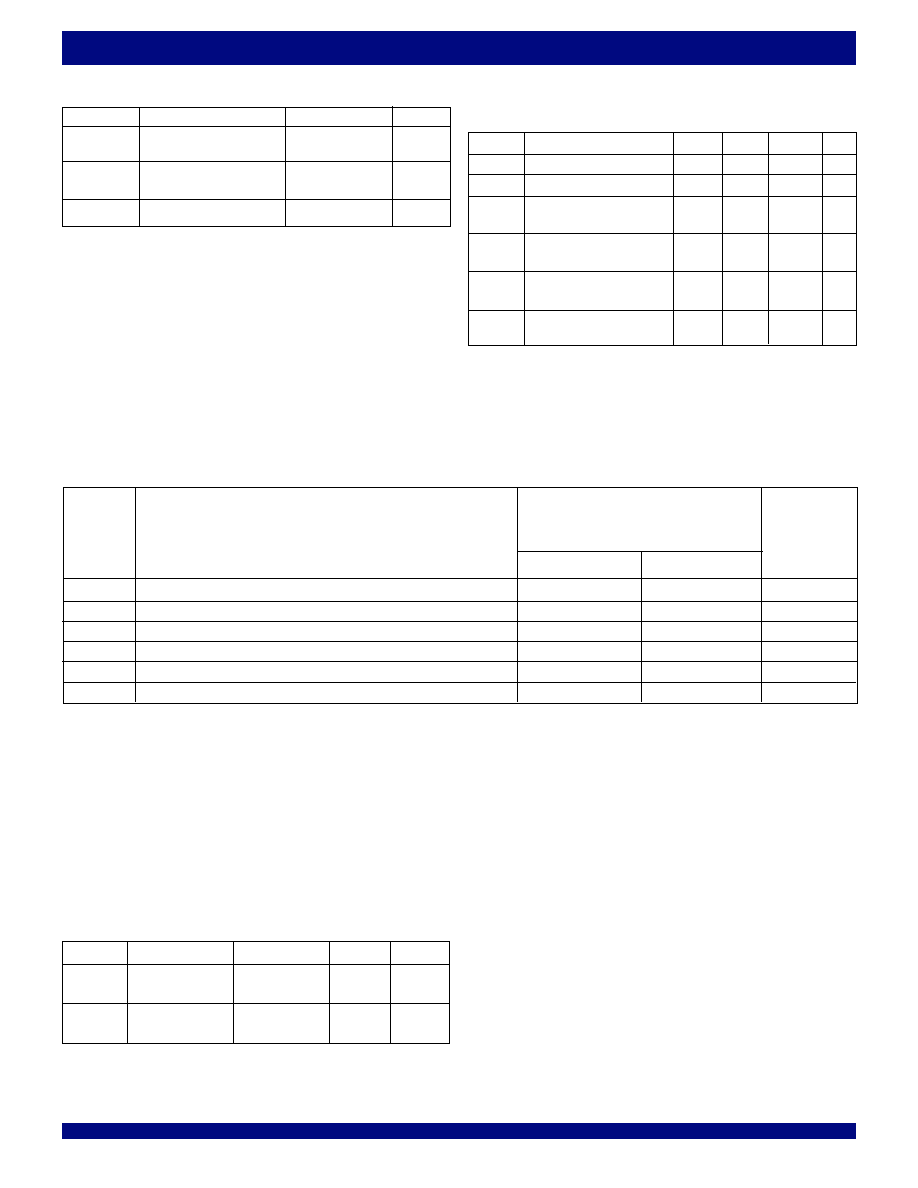 | –≠–ª–µ–∫—Ç—Ä–æ–Ω–Ω—ã–π –∫–æ–º–ø–æ–Ω–µ–Ω—Ç: 72285 | –°–∫–∞—á–∞—Ç—å:  PDF PDF  ZIP ZIP |

1
2003 Integrated Device Technology, Inc. All rights reserved. Product specifications subject to change without notice.
DSC-4674/3
FEBRUARY 2003
IDT and the IDT logo are registered trademarks of Integrated Device Technology, Inc. The SuperSync FIFO is a trademark of Integrated Device Technology, Inc.
COMMERCIAL AND INDUSTRIAL TEMPERATURE RANGES
CMOS SuperSync FIFOTM
32,768 x 18
65,536 x 18
IDT72275
IDT72285
FEATURES:
∑
∑
∑
∑
∑
Choose among the following memory organizations:
IDT72275 -- 32,768 x 18
IDT72285 -- 65,536 x 18
∑
∑
∑
∑
∑
Pin-compatible with the IDT72255LA/72265LA SuperSync FIFOs
∑
∑
∑
∑
∑
10ns read/write cycle time (6.5ns access time)
∑
∑
∑
∑
∑
Fixed, low first word data latency time
∑
∑
∑
∑
∑
Auto power down minimizes standby power consumption
∑
∑
∑
∑
∑
Master Reset clears entire FIFO
∑
∑
∑
∑
∑
Partial Reset clears data, but retains programmable
settings
∑
∑
∑
∑
∑
Retransmit operation with fixed, low first word data
latency time
∑
∑
∑
∑
∑
Empty, Full and Half-Full flags signal FIFO status
∑
∑
∑
∑
∑
Programmable Almost-Empty and Almost-Full flags, each flag
can default to one of two preselected offsets
∑
∑
∑
∑
∑
Program partial flags by either serial or parallel means
∑
∑
∑
∑
∑
Select IDT Standard timing (using
EF and FF flags) or First
Word Fall Through timing (using
OR and IR flags)
∑
∑
∑
∑
∑
Output enable puts data outputs into high impedance state
∑
∑
∑
∑
∑
Easily expandable in depth and width
∑
∑
∑
∑
∑
Independent Read and Write Clocks (permit reading and writing
simultaneously)
∑
∑
∑
∑
∑
Available in the 64-pin Thin Quad Flat Pack (TQFP) and the 64-
pin Slim Thin Quad Flat Pack (STQFP)
∑
∑
∑
∑
∑
High-performance submicron CMOS technology
∑
∑
∑
∑
∑
Industrial temperature range (-40
∞∞
∞∞
∞C to +85∞∞∞∞∞C) is available
DESCRIPTION:
The IDT72275/72285 are exceptionally deep, high speed, CMOS First-In-
First-Out (FIFO) memories with clocked read and write controls. These FIFOs
offer numerous improvements over previous SuperSync FIFOs, including the
following:
∑
∑
∑
∑
∑
The limitation of the frequency of one clock input with respect to the other has
been removed. The Frequency Select pin (FS) has been removed, thus
it is no longer necessary to select which of the two clock inputs, RCLK or
WCLK, is running at the higher frequency.
∑
∑
∑
∑
∑
The period required by the retransmit operation is now fixed and short.
∑
∑
∑
∑
∑
The first word data latency period, from the time the first word is written to an
empty FIFO to the time it can be read, is now fixed and short. (The variable
clock cycle counting delay associated with the latency period found on
previous SuperSync devices has been eliminated on this SuperSync family.)
FUNCTIONAL BLOCK DIAGRAM
INPUT REGISTER
OUTPUT REGISTER
RAM ARRAY
32,768 x 18
65,536 x 18
FLAG
LOGIC
FF/IR
PAF
EF/OR
PAE
HF
READ POINTER
READ
CONTROL
LOGIC
WRITE CONTROL
LOGIC
WRITE POINTER
RESET
LOGIC
WEN
WCLK
D
0
-D
17
LD
MRS
REN
RCLK
OE
Q
0
-Q
17
OFFSET REGISTER
PRS
FWFT/SI
SEN
RT
4674 drw 01

COMMERCIAL AND INDUSTRIAL
TEMPERATURE RANGES
IDT72275/72285
CMOS SuperSync FIFOTM 32,768 x 18 and 65,536 x 18
2
PIN CONFIGURATIONS
TQFP (PN64-1, ORDER CODE: PF)
STQFP (PP64-1, ORDER CODE: TF)
TOP VIEW
DESCRIPTION (CONTINUED)
PIN 1
1
2
3
4
5
6
7
8
9
10
11
12
13
14
15
16
48
47
46
45
44
43
42
41
40
39
38
37
36
35
34
33
WEN
SEN
DC
V
CC
GND
D17
D16
D15
D14
D13
D12
D11
D10
D9
D8
D7
64 63 62 61 60 59 58 57 56 55 54 53 52 51 50 49
17 18 19 20 21 22 23 24 25 26 27 28 29 30 31 32
Q17
Q16
GND
Q15
Q14
V
CC
Q13
Q12
Q11
GND
Q10
Q9
Q8
Q7
Q6
GND
WCLK
PRS
MRS
LD
FWFT/SI
GND
FF
/
IR
PAF
HF
V
CC
PAE
EF
/
OR
RCLK
REN
RT
OE
Q5
Q4
V
CC
Q3
Q2
GND
Q1
Q0
GND
D0
D1
D2
D3
D4
D5
D6
4674 drw 02
SuperSync FIFOs are particularly appropriate for network, video, telecom-
munications, data communications and other applications that need to buffer
large amounts of data.
The input port is controlled by a Write Clock (WCLK) input and a Write
Enable (
WEN) input. Data is written into the FIFO on every rising edge of
WCLK when
WEN is asserted. The output port is controlled by a Read Clock
(RCLK) input and Read Enable (
REN) input. Data is read from the FIFO on
every rising edge of RCLK when
REN is asserted. An Output Enable (OE)
input is provided for three-state control of the outputs.
The frequencies of both the RCLK and the WCLK signals may vary from
0 to f
MAX
with complete independence. There are no restrictions on the
frequency of the one clock input with respect to the other.
There are two possible timing modes of operation with these devices:
IDT Standard mode and First Word Fall Through (FWFT) mode.
In IDT Standard mode, the first word written to an empty FIFO will not
appear on the data output lines unless a specific read operation is
performed. A read operation, which consists of activating
REN and enabling
a rising RCLK edge, will shift the word from internal memory to the data output
lines.
In FWFT mode, the first word written to an empty FIFO is clocked directly
to the data output lines after three transitions of the RCLK signal. A
REN
does not have to be asserted for accessing the first word. However,
subsequent words written to the FIFO do require a LOW on
REN for access.
The state of the FWFT/SI input during Master Reset determines the timing
mode in use.
For applications requiring more data storage capacity than a single FIFO
can provide, the FWFT timing mode permits depth expansion by chaining
FIFOs in series (i.e. the data outputs of one FIFO are connected to the
corresponding data inputs of the next). No external logic is required.
These FIFOs have five flag pins,
EF/OR (Empty Flag or Output Ready),
FF/IR (Full Flag or Input Ready), HF (Half-full Flag), PAE (Programmable
Almost-Empty flag) and
PAF (Programmable Almost-Full flag). The EF and
FF functions are selected in IDT Standard mode. The IR and OR functions
are selected in FWFT mode.
HF, PAE and PAF are always available for use,
irrespective of timing mode.

3
COMMERCIAL AND INDUSTRIAL
TEMPERATURE RANGES
IDT72275/72285
CMOS SuperSync FIFOTM 32,768 x 18 and 65,536 x 18
DESCRIPTION (CONTINUED)
Figure 1. Block Diagram of Single 32,768 x 18 and 65,536 x 18 Synchronous FIFO
DATA OUT (Q
0
- Q
n
)
DATA IN (D
0
- D
n
)
MASTER RESET (
MRS)
READ CLOCK (RCLK)
READ ENABLE (
REN)
OUTPUT ENABLE (
OE)
EMPTY FLAG/OUTPUT READY (
EF/OR)
PROGRAMMABLE ALMOST-EMPTY (
PAE)
WRITE CLOCK (WCLK)
WRITE ENABLE (
WEN)
LOAD (
LD)
FULL FLAG/INPUT READY (
FF/IR)
PROGRAMMABLE ALMOST-FULL (
PAF)
IDT
72275
72285
PARTIAL RESET (
PRS)
FIRST WORD FALL THROUGH/SERIAL INPUT
(FWFT/SI)
RETRANSMIT (
RT)
4674 drw 03
HALF FULL FLAG (
HF)
SERIAL ENABLE(
SEN)
PAE and PAF can be programmed independently to switch at any point in
memory. (See Table I and Table II.) Programmable offsets determine the flag
switching threshold and can be loaded by two methods: parallel or serial. Two
default offset settings are also provided, so that
PAE can be set to switch at 127
or 1,023 locations from the empty boundary and the
PAF threshold can be set
at 127 or 1,023 locations from the full boundary. These choices are made with
the
LD pin during Master Reset.
For serial programming,
SEN together with LD on each rising edge of
WCLK, are used to load the offset registers via the Serial Input (SI). For
parallel programming,
WEN together with LD on each rising edge of WCLK,
are used to load the offset registers via Dn.
REN together with LD on each
rising edge of RCLK can be used to read the offsets in parallel from Qn
regardless of whether serial or parallel offset loading has been selected.
During Master Reset (
MRS) the following events occur: The read and
write pointers are set to the first location of the FIFO. The FWFT pin selects
IDT Standard mode or FWFT mode. The
LD pin selects either a partial flag
default setting of 127 with parallel programming or a partial flag default setting
of 1,023 with serial programming. The flags are updated according to the timing
mode and default offsets selected.
The Partial Reset (
PRS) also sets the read and write pointers to the first
location of the memory. However, the timing mode, partial flag program-
ming method, and default or programmed offset settings existing before
Partial Reset remain unchanged. The flags are updated according to the
timing mode and offsets in effect.
PRS is useful for resetting a device in mid-
operation, when reprogramming partial flags would be undesirable.
The Retransmit function allows data to be reread from the FIFO more
than once. A LOW on the
RT input during a rising RCLK edge initiates a
retransmit operation by setting the read pointer to the first location of the
memory array.
If, at any time, the FIFO is not actively performing an operation, the chip
will automatically power down. Once in the power down state, the standby
supply current consumption is minimized. Initiating any operation (by
activating control inputs) will immediately take the device out of the power
down state.
The IDT72275/72285 are fabricated using IDT's high speed submicron
CMOS technology.

COMMERCIAL AND INDUSTRIAL
TEMPERATURE RANGES
IDT72275/72285
CMOS SuperSync FIFOTM 32,768 x 18 and 65,536 x 18
4
Symbol
Name
I/O
Description
D
0
≠D
17
Data Inputs
I
Data inputs for a 18-bit bus.
MRS
Master Reset
I
MRS initializes the read and write pointers to zero and sets the output register to all zeroes. During
Master Reset, the FIFO is configured for either FWFT or IDT Standard mode, one of two programmable
flag default settings, and serial or parallel programming of the offset settings.
PRS
Partial Reset
I
PRS initializes the read and write pointers to zero and sets the output register to all zeroes. During
Partial Reset, the existing mode (IDT or FWFT), programming method (serial or parallel), and
programmable flag settings are all retained.
RT
Retransmit
I
RT asserted on the rising edge of RCLK initializes the READ pointer to zero, sets the EF flag to LOW
(
OR to HIGH in FWFT mode) temporarily and does not disturb the write pointer, programming
method, existing timing mode or programmable flag settings.
RT is useful to reread data from the first
physical location of the FIFO.
FWFT/SI
First Word Fall
I
During Master Reset, selects First Word Fall Through or IDT Standard mode. After Master Reset,
Through/Serial In
this pin functions as a serial input for loading offset registers
WCLK
Write Clock
I
When enabled by
WEN, the rising edge of WCLK writes data into the FIFO and offsets into the
programmable registers for parallel programming, and when enabled by
SEN, the rising edge of
WCLK writes one bit of data into the programmable register for serial programming.
WEN
Write Enable
I
WEN enables WCLK for writing data into the FIFO memory and offset registers.
RCLK
Read Clock
I
When enabled by
REN, the rising edge of RCLK reads data from the FIFO memory and offsets from the
programmable registers.
REN
Read Enable
I
REN enables RCLK for reading data from the FIFO memory and offset registers.
OE
Output Enable
I
OE controls the output impedance of Q
n.
SEN
Serial Enable
I
SEN enables serial loading of programmable flag offsets.
LD
Load
I
During Master Reset,
LD selects one of two partial flag default offsets (127 or 1,023 and determines the
flag offset programming method, serial or parallel. After Master Reset, this pin enables writing to and reading
from the offset registers
DC
Don't Care
I
This pin must be tied to either V
CC
or GND and must not toggle after Master Reset.
FF/IR
Full Flag/
O
In the IDT Standard mode, the
FF function is selected. FF indicates whether or not the FIFO memory
Input Ready
is full. In the FWFT mode, the
IR function is selected. IR indicates whether or not there is space available
for writing to the FIFO memory.
EF/OR
Empty Flag/
O
In the IDT Standard mode, the
EF function is selected. EF indicates whether or not the FIFO memory
Output Ready
is empty. In FWFT mode, the
OR function is selected. OR indicates whether or not there is valid data
available at the outputs.
PAF
Programmable
O
PAF goes LOW if the number of words in the FIFO memory is more than total word capacity of the
Almost Full Flag
FIFO minus the full offset value m, which is stored in the Full Offset register. There are two possible
default values for m: 127 or 1,023.
PAE
Programmable
O
PAE goes LOW if the number of words in the FIFO memory is less than offset n, which is stored in the
Almost Empty Flag
Empty Offset register. There are two possible default values for n: 127 or 1,023. Other values for n can
be programmed into the device.
HF
Half-Full Flag
O
HF indicates whether the FIFO memory is more or less than half-full.
Q
0
≠Q
17
Data Outputs
O
Data outputs for an 18-bit bus.
V
CC
Power
+5 Volt power supply pins.
GND
Ground
Ground pins.
PIN DESCRIPTION

5
COMMERCIAL AND INDUSTRIAL
TEMPERATURE RANGES
IDT72275/72285
CMOS SuperSync FIFOTM 32,768 x 18 and 65,536 x 18
Symbol
Rating
Commercial
Unit
V
TERM
Terminal Voltage
≠0.5 to +7
V
with respect to GND
T
STG
Storage
≠55 to +125
∞ C
Temperature
I
OUT
DC Output Current
≠50 to +50
mA
NOTES:
1. With output deselected, (
OE
V
IH
).
2. Characterized values, not currently tested.
Symbol
Parameter
(1)
Conditions
Max.
Unit
C
IN
(2)
Input
V
IN
= 0V
10
pF
Capacitance
C
OUT
(1,2)
Output
V
OUT
= 0V
10
pF
Capacitance
NOTE:
1. 1.5V undershoots are allowed for 10ns once per cycle.
IDT72275
IDT72285
Commercial & Industrial
(1)
t
CLK
= 10, 15, 20 ns
Symbol
Parameter
Min.
Max.
Unit
I
LI
(2)
Input Leakage Current
≠1
1
µ A
I
LO
(3)
Output Leakage Current
≠10
10
µA
V
OH
Output Logic "1" Voltage, I
OH
= ≠2 mA
2.4
--
V
V
OL
Output Logic "0" Voltage, I
OL
= 8 mA
--
0.4
V
I
CC1
(4,5,6)
Active Power Supply Current
--
90
mA
I
CC2
(4,7)
Standby Current
--
20
mA
NOTES:
1. Industrial temperature range product for 15ns and 20ns speed grade are available as a standard device.
2 .Measurements with 0.4
V
IN
V
CC
.
3.
OE
V
IH
, 0.4
V
OUT
V
CC
.
4. Tested with outputs open (I
OUT
= 0).
5. RCLK and WCLK toggle at 20 MHz and data inputs switch at 10 MHz.
6. Typical I
CC1
= 20 + 1.8*f
S
+ 0.02*C
L
*f
S
(in mA) with V
CC
= 5V, t
A
= 25
∞C, f
S
= WCLK frequency = RCLK frequency (in MHz, using TTL levels), data switching at
f
S
/2, C
L
= capacitive load (in pF).
7. All Inputs = V
CC
- 0.2V or GND + 0.2V, except RCLK and WCLK, which toggle at 20 MHz.
DC ELECTRICAL CHARACTERISTICS
(Commercial: V
CC
= 5V ± 10%, T
A
= 0
∞C to +70∞C; Industrial: V
CC
= 5V
± 10%, T
A
= -40
∞C to +85∞C)
NOTE:
1. Stresses greater than those listed under ABSOLUTE MAXIMUM RATINGS may cause
permanent damage to the device. This is a stress rating only and functional operation
of the device at these or any other conditions above those indicated in the operational
sections of this specification is not implied. Exposure to absolute maximum rating
conditions for extended periods may affect reliability.
ABSOLUTE MAXIMUM RATINGS
Symbol
Parameter
Min.
Typ.
Max.
Unit
V
CC
Supply Voltage(Com'l & Ind'l)
4.5
5.0
5.5
V
GND
Supply Voltage(Com'l & Ind'l)
0
0
0
V
V
IH
Input High Voltage
(Com'l & Ind'l)
2.0
--
--
V
V
IL
(1)
Input Low Voltage
(Com'l & Ind'l)
--
--
0.8
V
T
A
Operating Temperature
0
--
+70
∞ C
Commercial
T
A
Operating Temperature
-40
+85
∞C
Industrial
RECOMMENDED DC OPERATING
CONDITIONS
CAPACITANCE
(T
A
= +25
∞C, f = 1.0MHz)




